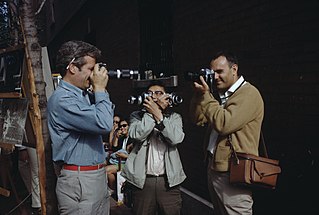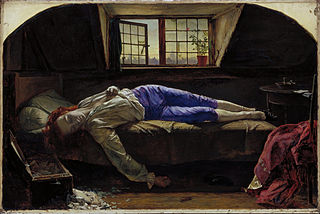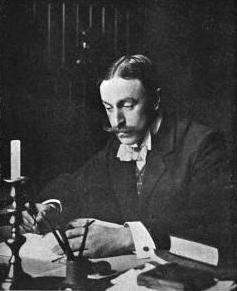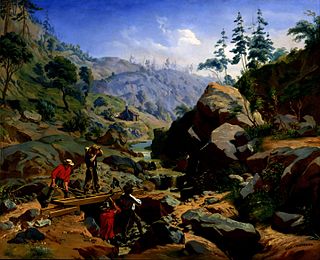Charles Henry Sawyer (1868-1954) was a painter and photographer in the United States. [1]
Charles Henry Sawyer (1868-1954) was a painter and photographer in the United States. [1]
Charles H. Sawyer was born on March 24, 1868, probably in Norridgewock, Maine, the third son of Henry K. Sawyer, who ran a hotel and livery stable. He and his brothers Russell and William were educated locally and then attended the Eaton School. Here Charles studied art and painting; and it was here he met his future wife, Mary Anderson. [2]
In the 1890s Sawyer began his career as a portrait artist, a painter, and then as a photographer in Providence, Rhode Island. He also worked as a pencil artist for the New-York Tribune and worked with the well-known photo painter Wallace Nutting. Here, Sawyer learned the painting and coloring techniques that would move his black and white photographic art to another level. He also created watercolor, pastel, and crayon portraits on commission. Ultimately, however, his fortune and reputation were built on his dramatic American and Canadian landscapes. [3]
After a second stay in Providence, he returned to Norridgewock to concentrate on his scenic, mostly local, photographs. Soon after a fire in 1904, Charles, his wife Mary and son Harold settled in Farmington, Maine, next to Norridgewock, to start a new life. Coincidentally, it was the same year that Wallace Nutting opened his first studio in New York City. Charles Sawyer maintained his studio on Main Street in Farmington from 1904 until 1918. [3]
Using watercolor, gouache and oil paints, Sawyer began transforming his black and white photographs into images of glowing landscapes, in many ways reminiscent of the Hudson River School of oil painters. Commercial color film was still 30 years away, and 30 years of the golden age of hand-painted photography lay ahead. [2]
Sawyer added color to his black and white photographs by hand-painting and hand-coloring each photograph, one at a time. These early colorings were primarily grey/green, but as his skill and expertise continued, myriad colors and shades were added.
In hand-coloring, the entire photographic image can be seen through a translucent color film, with no image details obscured by the color medium. But in hand-painting, opaque colors are applied to black and white photographs, to cover or alter portions of the photographic image. The same paint, sometimes in a deeper color, was also used to paint the color into the photograph. [4]
Sawyer's first photographs were originally printed from glass negatives on a platinum paper ("platinotypes"). After World War I, platinotypes were replaced by Satista paper, which came from England, and later from Boston. This paper contained only a trace of platinum, but a larger amount of silver. Satista was mainly used for watercolors; bromide papers were primarily used to support oils. These papers were dipped in water and then sponge-dried. Sawyer's earliest prints were painted with watercolor. Because of this, prints surviving from this period are usually more muted. [5]
Most finished photographs sold by Charles Sawyer were hand-painted. Few photographs were sold as black and white, and Sawyer's sepia offerings were even less common. For this reason, today, Sawyer's sepia images are hard to find.
Unlike Wallace Nutting, Charles Sawyer rarely staged scenes. If an image contained people, cattle, sheep, etc., that is what was there and happening at the time. "Among the New England Hills", photographed and painted in 1904 in Farmington, Maine, is just such a scene. This pencil-signed photograph contains two hay wagons pulled by cattle, with a young boy atop a hay load. A man stands beside one loaded wagon, and a woman in a long dress is handing a bearded old man a cup. Mountains are the backdrop for the scene. In life, this was the Voter family on Voter Hill. Other shots of the scene, with slight variations, were also captured on glass film. Other titles focusing on the wagon scene include "Hay in the Orchard", "Helping Grandpa", and "The Last Load". [6]
Because it was uncommon for Charles Sawyer to stage scenes, Sawyer images with people or animals are rare. Interiors are also uncommon. His preference for capturing and presenting landscapes was validated by sales in his lifetime; and landscapes have also been his most enduring work. [7]
In order to be closer to the scenic areas of New Hampshire's White Mountains, the initial focus of Charles' work, the Sawyers left Farmington in the early 1920s and moved to Concord, New Hampshire – a move that would last a lifetime. [7]
At Charles Sawyer's studio at 55 Pleasant Street in Concord, Charles' business expanded and prospered. By 1922, Sawyer advertisements in the Concord Directory were common. Photographic painters and colorists were hired; some worked in the studio and some took photographs home to complete. [5]
In small notebooks, Sawyer kept exact notes on his shooting excursions between 1922 and 1930. He noted the intensity of the sun ("hazy sun", "very little sun"), the spot from which he shot ("Winnipesaukee from Rivers Farm, Long Island") and the technicalities of shutter speed, frame numbers, film type, etc. He also noted color specifics, such as "a little mauve near the falls on the right. Dark wet brown right near the falls. Foreground gray and orange – yellow gravel,…" Occasionally, he noted information about historical landmarks or the fact that he had had a good time, or copied down the name of someone to whom a free painted photograph should be sent. [5]
Sawyer operated his studio longer than Wallace Nutting, David Davidson or Fred Thompson, contemporaries in the genre. [3]
The business survived two world wars, a studio fire in 1943, a recession, and a stagnant economy. For this reason, no matter where he was and no matter what he was doing, the personal letters of Charles Sawyer all mention some aspect of painting or the business. It was his life. [8]
Charles Sawyer's health was failing in the spring of 1954. He died on Wednesday, June 14, 1954. Heart disease is believed to be the cause. Sawyer's final resting spot is in Norridgewock, Maine. His tombstone reads, "He walked with beauty." [7]

Photography is the art, application, and practice of creating images by recording light, either electronically by means of an image sensor, or chemically by means of a light-sensitive material such as photographic film. It is employed in many fields of science, manufacturing, and business, as well as its more direct uses for art, film and video production, recreational purposes, hobby, and mass communication.

Painterliness is a concept based on German: malerisch ('painterly'), a word popularized by Swiss art historian Heinrich Wölfflin (1864–1945) to help focus, enrich and standardize the terms being used by art historians of his time to characterize works of art.

Thomas Cowperthwait Eakins was an American realist painter, photographer, sculptor, and fine arts educator. He is widely acknowledged to be one of the most important American artists.

Watercolor or watercolour, also aquarelle, is a painting method in which the paints are made of pigments suspended in a water-based solution. Watercolor refers to both the medium and the resulting artwork. Aquarelles painted with water-soluble colored ink instead of modern water colors are called aquarellum atramento by experts. However, this term has now tended to pass out of use.

Color photography is a type of photography that uses media capable of capturing and reproducing colors. By contrast, black-and-white or gray-monochrome photography records only a single channel of luminance (brightness) and uses media capable only of showing shades of gray.

Platinum prints, also called platinotypes, are photographic prints made by a monochrome printing process involving platinum.

In comics, a colorist is responsible for adding color to black-and-white line art. For most of the 20th century this was done using brushes and dyes which were then used as guides to produce the printing plates. Since the late 20th century it is most often done using digital media, with printing separations produced electronically.

Frederick Childe Hassam was an American Impressionist painter, noted for his urban and coastal scenes. Along with Mary Cassatt and John Henry Twachtman, Hassam was instrumental in promulgating Impressionism to American collectors, dealers, and museums. He produced over 3,000 paintings, oils, watercolors, etchings, and lithographs over the course of his career, and was an influential American artist of the early 20th century.

The Hague School is a group of artists who lived and worked in The Hague between 1860 and 1890. Their work was heavily influenced by the realist painters of the French Barbizon school. The painters of the Hague school generally made use of relatively somber colors, which is why the Hague School is sometimes called the Gray School.

Hand-colouring refers to any method of manually adding colour to a monochrome photograph, generally either to heighten the realism of the image or for artistic purposes. Hand-colouring is also known as hand painting or overpainting.
Edwin Walter Dickinson was an American painter and draftsman best known for psychologically charged self-portraits, quickly painted landscapes, which he called premier coups, and large, hauntingly enigmatic paintings involving figures and objects painted from observation, in which he invested his greatest time and concern. His drawings are also widely admired and were the subject of the first book published on his work. Less well known are his premier coup portraits and nudes, his medium-sized paintings done entirely from imagination or incorporating elements from one of his drawings or done from observation over several days or weeks, including still lifes, portraits of others, both commissioned and not, and nudes.

Haystacks is the common English title for a series of impressionist paintings by Claude Monet. The principal subject of each painting in the series is stacks of harvested wheat. The title refers primarily to a twenty-five canvas series which Monet began near the end of the summer of 1890 and continued through the following spring, though Monet also produced five earlier paintings using this same stack subject. A precursor to the series is the 1884 Haystack Near Giverny.
Corel Painter Essentials is a home software studio for turning photographs into paintings. Corel Painter Essentials is now in its 7th incarnation.
California Tonalism was art movement that existed in California from circa 1890 to 1920. Tonalist are usually intimate works, painted with a limited palette. Tonalist paintings are softly expressive, suggestive rather than detailed, often depicting the landscape at twilight or evening, when there is an absence of contrast. Tonalist paintings could also be figurative, but in them, the figure was usually out of doors or in an interior in a low-key setting with little detail.

The Death of Chatterton is an oil painting on canvas, by the English Pre-Raphaelite painter Henry Wallis, now in Tate Britain, London. Two smaller versions, sketches or replicas, are possessed by the Birmingham Museum and Art Gallery and the Yale Center for British Art. The Tate painting measures 62.2 centimetres (24.5 in) by 93.3 centimetres (36.7 in), and was completed during 1856.

Jennie Augusta Brownscombe was an American painter, designer, etcher, commercial artist, and illustrator. Brownscombe studied art for years in the United States and in Paris. She was a founding member, student and teacher at the Art Students League of New York. She made genre paintings, including revolutionary and colonial American history, most notably The First Thanksgiving held at Pilgrim Hall in Plymouth, Massachusetts. She sold the reproduction rights to more than 100 paintings, and images of her work have appeared on prints, calendars and greeting cards. Her works are in many public collections and museums. In 1899 she was described by New York World as "one of America's best artists."

Alfred Horsley Hinton was an English landscape photographer, best known for his work in the pictorialist movement in the 1890s and early 1900s. As an original member of the Linked Ring and editor of The Amateur Photographer, he was one of the movement's staunchest advocates. Hinton wrote nearly a dozen books on photographic technique, and his photographs were exhibited at expositions throughout Europe and North America.
M.T. Hla (1874–1946) was an early pioneer watercolor and oil painter of Burma who painted in the Western style. M.T. Hla was the signature he used for signing his paintings, which was apparently derived from the initials in the name Maung Tun Hla.

Frederick August Wenderoth or F. A. Wenderoth was a German-born American painter and photographer. Born and educated in Cassel, where he first learned to paint from his father, he established a lifelong friendship with Charles Christian Nahl at school. During the 1840s period of political upheaval in Hesse, he moved to Paris, where he was joined by Nahl and his half-brother Arthur Nahl.

Portrait of Tearful Woman is a hand colored photograph by American visual artist Man Ray, created in 1936. It was originally a black and white photograph but the artist worked it by hand to create the final result. As such it can be considered that unites Man Ray's artistry both as a photographer and as a painter. The original negative of the photograph is held at the Musée National d'Art Moderne, in Paris.